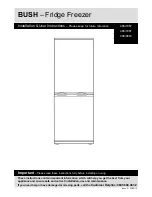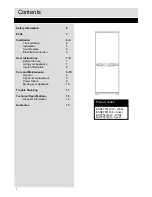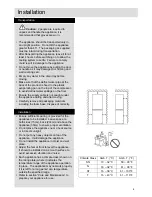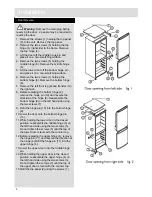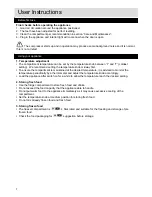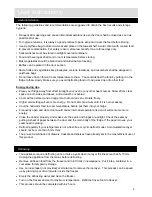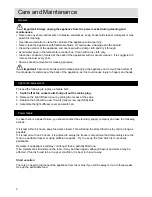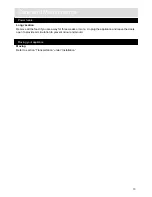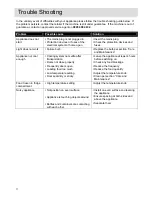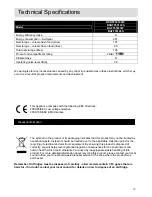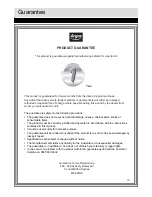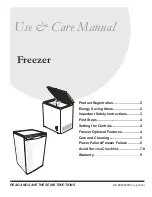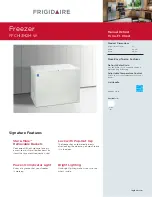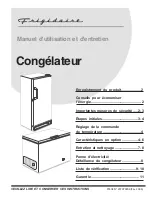
User Instructions
Useful information
Defrosting
The following guidelines and recommendations are suggested to obtain the best results and storage
hygiene.
y
Frequent door openings can cause internal temperature rise so the door shall be closed as soon as
possible after use.
y
For hygiene reasons, it is always a good practise to pack, wrap and cover the food before storing.
y
Use a polythene bag to store raw meat and place on the lowest shelf. Avoid contact with cooked food
to prevent contamination. For safety reason, store raw meat for two to three days only.
y
Cooked dishes must be stored in airtight covered containers.
y
Food and beverages shall cool to room temperature before storing.
y
Most vegetables should be blanched and chilled before freezing.
y
Bottles can be placed in the door section.
y
Some fruits and vegetables like pineapples, melons, tomatoes, and cucumbers shall be wrapped in
polythene bags.
y
Do not leave frozen food at room temperature to thaw. You could defrost the food by putting it in the
fridge to thaw slowly. Make sure you avoid defrosting food or food juices drip onto other food.
Energy saving tips
•
Place your fridge away from direct sunlight, your oven or any other heat sources. Allow 20 cm clear
space on both sides and above, and at least 5 cm behind.
•
Cover all food stored, and arrange it so that cold air can circulate freely.
•
Higher cold setting will use more energy. Do not set to maximum cold if it is not necessary.
•
Cool the hot/warm food to room temperature before put them into your fridge.
•
Frequently open and close door would cause internal temperature rise and it will consume more
energy.
•
Close the door(s) properly, and make sure the seals and hinges are airtight. Check the seals by
putting a sheet of paper between the door and the main body of the fridge. If the paper moves, your
seals need replacing.
•
Defrost regularly if your refrigerator is not a frost-free or cyclic defrost model. Accumulated ice layer
should not be more than 5 mm thick.
•
The pre-set combination of drawers, baskets and shelves have already set in the most efficient use of
this product.
•
The appliance require defrosting once or twice a year when ice layer thickness reaches 5~10mm.
Unplug the appliance from the mains before defrosting.
•
Remove all frozen food from the freezer and roll it firmly in newspapers. Put it into a container in a
cool place for temporary storage.
•
Use an ice scraper (not provided) or similar tool to remove the ice layer. This process can be speed
up by placing a pot of warm water inside the freezer.
•
Empty the defrosting water and clean the freezer.
•
Turn on the freezer and set to maximum temperature. Refill the frozen food to freezer.
•
This process should be completed within 2 hours.
8

